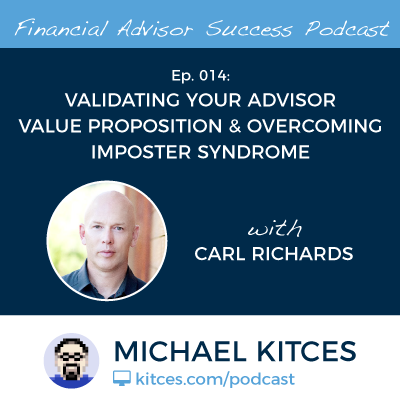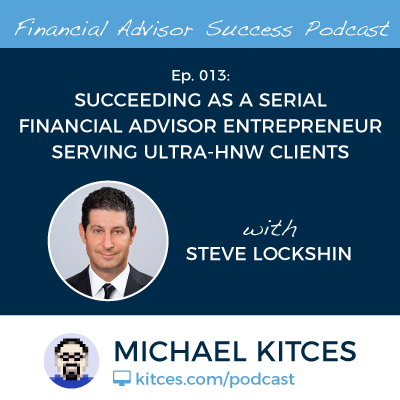Enjoy the current installment of "weekend reading for financial planners" – this week's edition kicks off with the big news that the DoL fiduciary rule was in fact delayed this week, not only with a 60-day delay to the applicability date itself, but also including a further delay until the end of the year for complying with the full-BIC, the need to acknowledge fiduciary duty to clients, and the application of the Best Interests Contract Exemption to annuities... though the debate is on as to whether this is still the beginning of the end of the DoL fiduciary rule, or if the extended delays for key provisions will actually make it harder to eliminate the rule now that the industry has been granted more time to accommodate! Also in the news this week is the launch of the CFP Board's new "I'm A CFP Pro" campaign to encourage more people to become CFP professionals (particularly amongst Millennials, women, and people of color, who are all currently under-represented amongst financial advisors), and a 'heads-up' from the SEC that it is increasingly scrutinizing RIAs who have 'independent' investment adviser representatives affiliating with them as 1099 contractors.
From there, we have a few articles about industry trends, including: a look at how regardless of the DoL fiduciary rule and its prospective delay, the biggest broker-dealers are in the process of reinventing themselves for a fiduciary-advice future; how advisors who are considering changing broker-dealers in this environment should scrutinize how the payouts really work, as some broker-dealers who offer 90%+ payouts also have higher costs (from trading charges to custody fees to compliance and technology fees) that may mean the advisor actually finishes with less on the bottom line; and a look at how a new "breakaway" trend is starting to emerge, not amongst the brokers who are breaking away to form RIAs, but amongst independent RIAs themselves, where advisor teams are breaking away to form their own new independent RIA firms.
We also have several more technical articles this week, from a new study by David Blanchett on the interplay between the amount of a retiree's guaranteed income and their ability to sustain a higher "safe" withdrawal rate from the portfolio that complements that guaranteed income (especially for retirees who have at least a little income flexibility), to discussion of another study that finds mutual funds holding ETFs tend to have inferior performance to those that hold stocks and bonds directly (whether due to bad market timing, or adding a layer of ETF fees while acting as a closet indexer), and an explanation of how conservation easements work and why they can be an appealing tax planning strategy for high-net-worth clients that have substantial positions in (undeveloped) land.
We wrap up with three interesting articles about personal development and learning: the first is an overview of the latest research on how we actually learn, and what we should do as adults to try to learn better; the second is a fascinating series of short interviews with prolific readers about how they read, and what strategies they engage in to get the most out of their reading material (hint: it's ok and normal to read for a while, then skim, then lose interest before getting to the end and picking up another book instead); and the last is a fascinating look at how the Pareto Principle, also known as the 80/20 rule, comes about naturally, and why it is that you don't have to be twice as good to get twice the results... it's only necessary to be 1% better, and do so persistently over an extended period of time.
Enjoy the "light" reading!

 Welcome back for the fourteenth episode of the Financial Advisor Success podcast!
Welcome back for the fourteenth episode of the Financial Advisor Success podcast! We wrap up with the sad news that this week, financial planning visionary Dick Wagner passed away unexpectedly. Wagner has long been recognized as a thought leader in the profession (since long before the term was popular), and was both a former practitioner, former volunteer leader at the chapter and national level in various FPA-predecessor organizations, co-founder of the Nazrudin Project (from which much of the life planning movement emerged), and a tireless advocate of advancing financial planning into a true profession around a broader garden of knowledge that he dubbed the study of "finology". Fortunately, Wagner was able to publish his book, "Financial Planning 3.0", just a few months before he passed away, and in today's weekend reading, we highlight what many view as the seminal article on how financial planners must evolve to truly become a recognized profession... an article he first published in the Journal of Financial Planning in 1990, that we are all collectively still trying to live up to today. Rest in peace, Dick Wagner.
We wrap up with the sad news that this week, financial planning visionary Dick Wagner passed away unexpectedly. Wagner has long been recognized as a thought leader in the profession (since long before the term was popular), and was both a former practitioner, former volunteer leader at the chapter and national level in various FPA-predecessor organizations, co-founder of the Nazrudin Project (from which much of the life planning movement emerged), and a tireless advocate of advancing financial planning into a true profession around a broader garden of knowledge that he dubbed the study of "finology". Fortunately, Wagner was able to publish his book, "Financial Planning 3.0", just a few months before he passed away, and in today's weekend reading, we highlight what many view as the seminal article on how financial planners must evolve to truly become a recognized profession... an article he first published in the Journal of Financial Planning in 1990, that we are all collectively still trying to live up to today. Rest in peace, Dick Wagner. Welcome back to the thirteenth episode of the Financial Advisor Success Podcast!
Welcome back to the thirteenth episode of the Financial Advisor Success Podcast!
